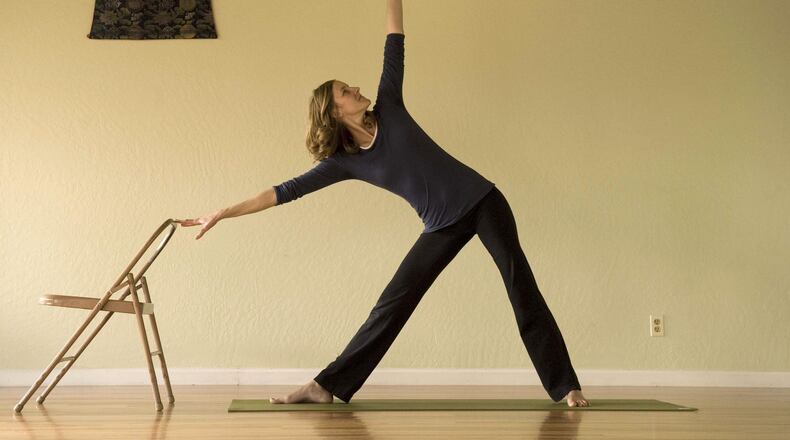This ‘slump-over’ pulls on the ligaments of the spinal vertebrae, eventually causing painful pressure. When backs ache, few people think, “Oh, I’d better check my posture and keep my back straight.” But training your spine to stay straight, with shoulders back, is one way to prevent back pain as you get older.
Another reason for chronic back pain is a physical weakness. Many people no longer move around as much or as vigorously as they did just a few years previously. Many who may have put on weight don’t even take the opportunity to get exercise; they head for the motorized shopping cart as soon as they get into a store.
This is the wrong thing for a pain-free back. If you sit while driving your vehicle to the store, and sit to do your shopping, then go back to the vehicle and sit while driving home, your back will get very little of the natural exercise that comes with just moving around. Sitting too much will almost guarantee a weak and painful back eventually.
That gives us two rules to prevent back pain: Keep your spinal column erect and straight and do as little sitting as possible.
The third rule is by far the most important: build up your spinal erectors. These are long columns of muscles and tendons that line each side of the spine. They taper off in the rib and neck area. The greatest mass for spinal erectors is found in the lower back, where it supports the spine. You can, in fact, see these columns of muscle in the lower backs of fit and well-built athletes, such as NFL football players and female tennis players.
Building strong and muscular spinal erectors will help support and strengthen the spine. These are actually easy muscles to build. Dead lifts with a bar or dumbbells will do the trick. But if you have allowed your spinal strength to atrophy, you must start out slow, with light weights and sufficient repetitions.
For example, if you’re in your 50s or older, start with ten-pound dumbbells. They’ll probably feel like no weight at all, but going through the motion of a dead lift with light weights will get your spinal erectors accustomed to the movement without stressing any muscle or tendon.
It’s essential that you do the dead lift with proper form, otherwise, you could injure your back. Start with the weight ‘dead’ on the floor, not held up against the shins. Bend over at the hips, not the waist, to pick up the weight. The back should be kept absolutely straight, without a curve. Ask a friend or a gym trainer to assess the flatness of your back.
You can bend your knees, but keep them a little flexed, not locked straight. Pick up the ‘dead’ weight from the floor and stand up straight again. Hold the weight for a few seconds, then bend over and replace it on the floor.
If you have been dead lifting with proper form for three or more weeks, and you feel no pain or irritation from the movement; add a small amount of poundage to what you’re lifting. If you’ve been doing ten-pound dumbbells, move up to 12-pounders.
Don’t be too quick to add more weight. Gain more strength before you make any increase to what you’re lifting. Slow and steady is the key. The result is the building of supportive tissue that will eliminate much of the back pain associated with aging.
———
Wina Sturgeon is an active 55+ based in Salt Lake City, who offers news on the science of anti-aging and staying youthful at: adventuresportsweekly.com. She skates, bikes and lifts weights to stay in shape.
About the Author
